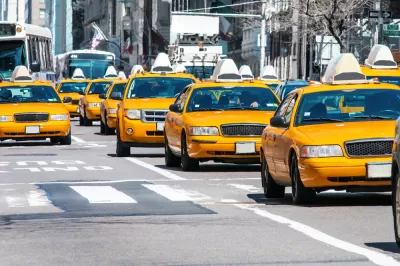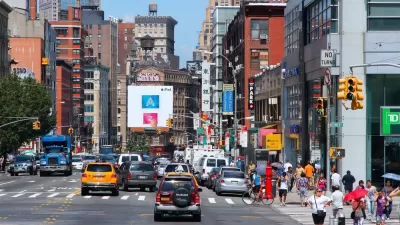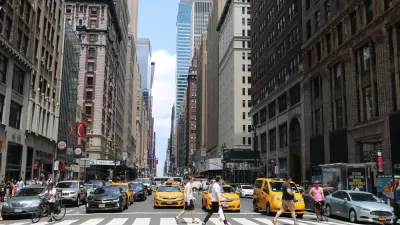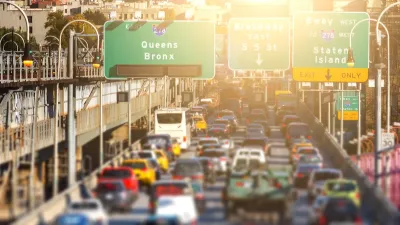Eight years ago, a proposal to charge on drivers entering the most congested parts of Manhattan was soundly defeated when it moved from the city to the state. Now the idea is being revisited again, with support from the governor.

Marc Santora reports that New York Governor Andrew Cuomo is revisiting the idea of congestion pricing in New York City. The idea is a familiar one—former Mayor Michael Bloomberg proposed a congestion pricing plan eight years ago, but was defeated by state lawmakers in Albany.
"Now, with the city’s subways in crisis — with daily delays increasingly common and its equipment in dire condition — Gov. Andrew M. Cuomo, who once doubted that congestion pricing would gain any traction in the state, is planning to resurrect the idea and will expend political capital to see it succeed," reports Santora.
Governor Cuomo is quoted in the article claiming that the new plan, though still not public, is an improvement on Bloomberg's proposal. A key priority of the new plan, according to Santora, "is making it as palatable as possible to commuters from the suburbs and boroughs outside Manhattan without undercutting the primary goals: providing a dedicated funding stream for the transit system, while reducing traffic squeezing onto some of the country’s most gridlocked streets."
Gov Cuomo's plan to use congestion pricing as a revenue generating tool for transit can be contrasted with a Mayor Bill de Blasio's idea to tax wealthy New Yorkers for the same purpose, revealed earlier in August.
FULL STORY: Cuomo Calls Manhattan Traffic Plan an Idea ‘Whose Time Has Come’

Alabama: Trump Terminates Settlements for Black Communities Harmed By Raw Sewage
Trump deemed the landmark civil rights agreement “illegal DEI and environmental justice policy.”

Planetizen Federal Action Tracker
A weekly monitor of how Trump’s orders and actions are impacting planners and planning in America.

The 120 Year Old Tiny Home Villages That Sheltered San Francisco’s Earthquake Refugees
More than a century ago, San Francisco mobilized to house thousands of residents displaced by the 1906 earthquake. Could their strategy offer a model for the present?

In Both Crashes and Crime, Public Transportation is Far Safer than Driving
Contrary to popular assumptions, public transportation has far lower crash and crime rates than automobile travel. For safer communities, improve and encourage transit travel.

Report: Zoning Reforms Should Complement Nashville’s Ambitious Transit Plan
Without reform, restrictive zoning codes will limit the impact of the city’s planned transit expansion and could exclude some of the residents who depend on transit the most.

Judge Orders Release of Frozen IRA, IIJA Funding
The decision is a victory for environmental groups who charged that freezing funds for critical infrastructure and disaster response programs caused “real and irreparable harm” to communities.
Urban Design for Planners 1: Software Tools
This six-course series explores essential urban design concepts using open source software and equips planners with the tools they need to participate fully in the urban design process.
Planning for Universal Design
Learn the tools for implementing Universal Design in planning regulations.
Clanton & Associates, Inc.
Jessamine County Fiscal Court
Institute for Housing and Urban Development Studies (IHS)
City of Grandview
Harvard GSD Executive Education
Toledo-Lucas County Plan Commissions
Salt Lake City
NYU Wagner Graduate School of Public Service





























